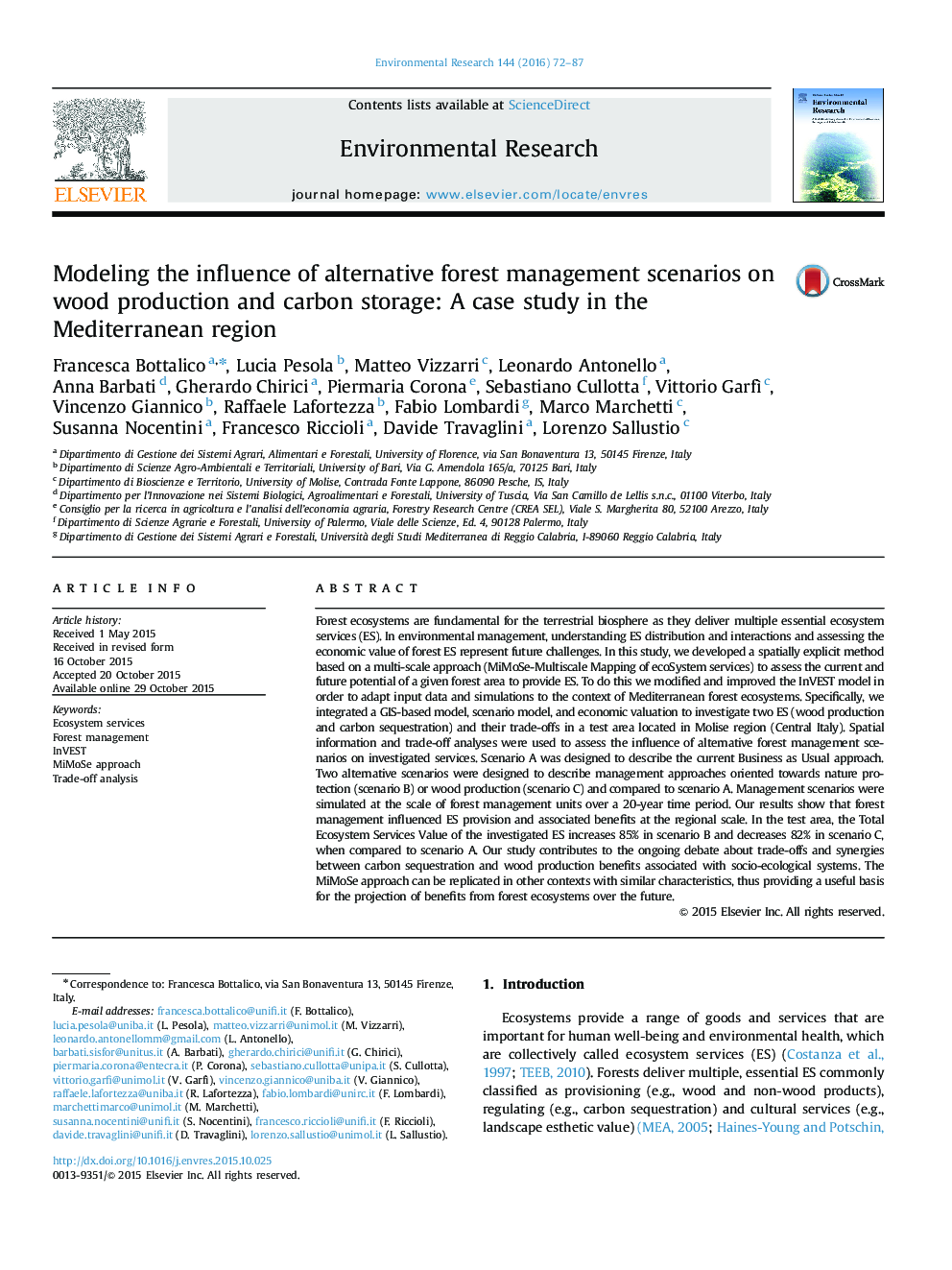| Article ID | Journal | Published Year | Pages | File Type |
|---|---|---|---|---|
| 4469646 | Environmental Research | 2016 | 16 Pages |
Forest ecosystems are fundamental for the terrestrial biosphere as they deliver multiple essential ecosystem services (ES). In environmental management, understanding ES distribution and interactions and assessing the economic value of forest ES represent future challenges. In this study, we developed a spatially explicit method based on a multi-scale approach (MiMoSe-Multiscale Mapping of ecoSystem services) to assess the current and future potential of a given forest area to provide ES. To do this we modified and improved the InVEST model in order to adapt input data and simulations to the context of Mediterranean forest ecosystems. Specifically, we integrated a GIS-based model, scenario model, and economic valuation to investigate two ES (wood production and carbon sequestration) and their trade-offs in a test area located in Molise region (Central Italy). Spatial information and trade-off analyses were used to assess the influence of alternative forest management scenarios on investigated services. Scenario A was designed to describe the current Business as Usual approach. Two alternative scenarios were designed to describe management approaches oriented towards nature protection (scenario B) or wood production (scenario C) and compared to scenario A. Management scenarios were simulated at the scale of forest management units over a 20-year time period. Our results show that forest management influenced ES provision and associated benefits at the regional scale. In the test area, the Total Ecosystem Services Value of the investigated ES increases 85% in scenario B and decreases 82% in scenario C, when compared to scenario A. Our study contributes to the ongoing debate about trade-offs and synergies between carbon sequestration and wood production benefits associated with socio-ecological systems. The MiMoSe approach can be replicated in other contexts with similar characteristics, thus providing a useful basis for the projection of benefits from forest ecosystems over the future.
